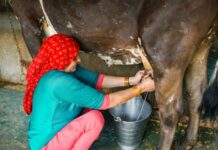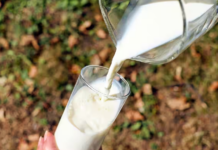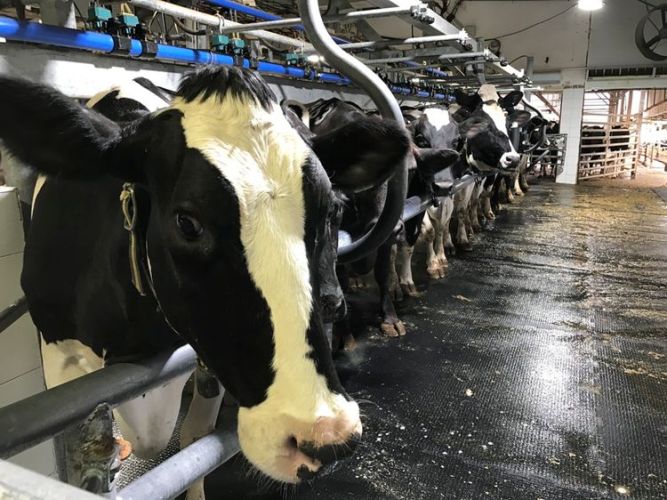By Arvind Kumawat Assistant Manager- Rajasthan Cooperative Dairy Federation Ltd, Jaipur.
KavitaKumari Solanki Assistant Manager- Rajasthan Cooperative Dairy Federation Ltd, Jaipur.
Ashok Kumar Assistant Manager- Jaipur Zila Dugdh Utpadak SahakariSangh Ltd, Jaipur.
Naveen Jose Phd Scholar- National Dairy Research Institute, Bengaluru.
Introduction
The significance of energy efficiency has been rapidly growing in the last few years. This is mainly due to increased energy cost and exhaustion of natural resources (like coal, petrol, diesel etc).India is largest milk producing country in the world with 210 million tonnes of milk production annually. Milk can be converted to various dairy products such as cheese, curd, ice creams etc. As the per capita milk consumption in the country is increasing the need to produce more amount of milk is gaining importance. The dairy industry handling a large amount of milk uses energy in several forms such as steam, hot water, compressed air, chilled water and electricity. The dairies have to focus on both aspects of maintaining a high product quality and concurrently reducing the production cost. These aspects can be met through investments in energy conservation, which can include the purchase of energy-conservation technologies and the implementation of plant-wide energy conservation practices. Energy conservation methods also reduce emission of greenhousegasses and other important air pollutants.
As of now energy crisis and hike in the prices of energy is the major problem faced by the world and with depleting energy sources it is of much importance to enhance equipment efficiency in dairy industry by implementing various thermal performance increasing and energy conservation techniques in their plants. In accordance with the alternative and innovative means adopted for the milk processing plants one must also consider various energy conservation techniques in the existing plants in operation.
Major energy uses
Many activities are involved in the manufacturing of dairy products such as: filtration, standardization, separation, homogenization, pasteurization, thermization, concentration, drying, clarification, cleaning-in-place, testing, packaging and storage. To conduct these processes, billions of money is spent on purchase of fuel and electricity. The Electricity is used to driveprocess motors, fans, pumps, compressed air systems, process cooling, freezing, cold storage, building lighting and HVAC systems. The largest share of fuel consumed by the dairy industry is used for direct process heating and steam generation via boiler systems. The fuels used include natural gas, coal, residual oil, and distillate oils. The most energy intensive activities involve heat generation. Other opportunities to save energy involve improving the efficiency of evaporators, compressors, refrigeration, air conditioning, and Cleaning-in-Place (CIP) systems.
Innovative technologies for reduction of energy consumption
These are the innovative technologies for reduction of energy consumption: –
- Expert Computer Control System
- Partial Homogenization
- Non-Thermal Pasteurization Methods
- Microfiltration
- Pulse Electrical Field Effects
- High- and Low-Intensity UV for Liquids
- Enzyme-based cleaners to improve CIP
- Just-In-Time (JIT) Dairy Manufacturing Concept
- Heat pumping of waste process heat
- Electrolyzed Oxidized Water
Benefits of saving energy
Improving energy efficiency can benefit your business and the environment by reducing energy costs through actions such as purchasing more efficient equipment, reducing the environmental impact of your business through minimising energyrelated greenhouse gas emissions extending equipment life, reducing operating costs and avoiding downtime through increased energy efficiency and improved maintenance regimes improving your businessreputation and employee satisfaction.
Energy conservation techniques
- Refrigeration and A.C. – Arresting cold air leakage,reducing refrigeration load by keeping diffusers outside the room, monitoring system performance, ensuring proper refrigerant charge, checking for refrigerant contamination, automated controls,segregation of refrigeration systems,efficient piping design and insulation, minimizing heat sources in cold storage areas,use of vapor absorption machine (VAM), operating ice bank system at night when atmospheric temperature is low.
- Steam and hot water – Correct selection and sizing of traps,group trapping,better insulation of steam lines/valves/tanks,improve condensate recovery,flash vessels,avoiding of steam leaks, minimize operating pressure,avoid unnecessary lengths,use of condensate as hot water.
- Boiler – Air/fuel ratio controls, tuning of boilers, pre-heat combustion air, air atomization of oil instead of steam, turbulators in fire tube types, conversion to energy-efficient boilers, convert to less costly fuels, waste heat recovery, efficient soot blowing, automatic stack damper, avoid infiltration of air, blow down heat recovery,solar Water Heating System.
- Spray drier – Operating temperature optimization, exhaust heat recovery, strategic placement of air intake, use of multiple stage drying, inlet air monitoring, use of crystallization (dry whey only), heat recovery from product, using other concentration techniques like membrane filtration.
- Compressed Air – Prevention of leaks in compressed air system, restoration of generation capacity of air compressor, reduce compressor delivery pressure wherever possible.
- Water conservation – Reuse of water from coolers, heat exchangers, evaporators etc, condensate recovery.
- Pasteurizer/Heat treatment– Use of high regeneration efficiency (90-95%) pasteurizers, reclamation/adding plates, heat exchanger enhancement techniques, compact immersion tube heat exchangers.
- Power System – Transformer loading, determination of plant load & load factor analysis, improving power factor, identification and minimsingtransformer losses, demand management & controls, parallel operation of DG/TG sets with grid, use of harmonic filters near equipments
- Fans & Pumps – Use high efficiency impeller along with cone, impeller derating using small diameter impeller, use of energy efficient hollow FRP impeller with aero foil design in cooling towers
- Spray Drying – Operating temperature optimization, exhaust heat recovery, strategic placement of air intake, use of multiple stage drying, inlet air monitoring, use of crystallization (dry whey only), heat recovery from product, using other concentration techniques like membrane filtration
- Evaporator – Maintenance, mechanical vapor recompression, thermal vapor recompression, multiple effect evaporators, concentration using membrane filtration
Conclusions
The dairy processing industry spends huge amount on purchase of fuels and electricity, making energy a substantial cost driver for the industry. Energy efficiency enhancement is an important way to reduce these costs and to increase predictable earnings in the face of ongoing energy price volatility. The concern towards environment and increasing price of fuels has raised the alarm towards energy efficient measures. A dedicated and planned energy management program will help to detect and contrivance energy efficiency measures and practices across the organization and ensure unremitting improvement.

























